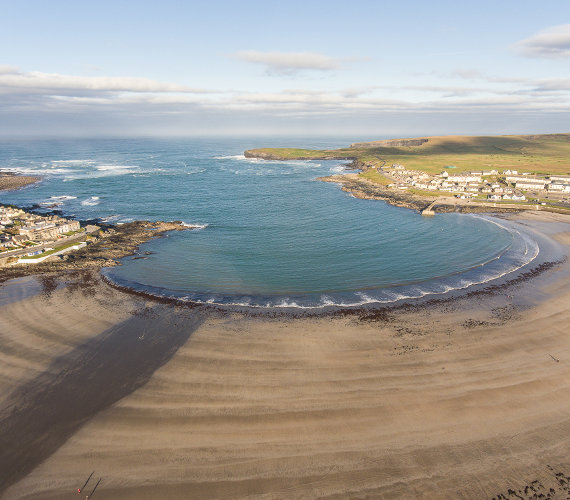During the early part of the 19th century, Kilkee was just a small fishing village but in the 1820s when a paddle steamer service from Limerick to Kilrush was launched, it began to attract visitors.[6] It has been a resort since then and was featured on the front page of the Illustrated London News as the premier bathing spot in what was then the United Kingdom of Great Britain and Ireland. As the town was more accessible to people from Limerick rather than Clare, holidaying in Kilkee became more of a Limerick custom, due to steamboats travelling daily up and down the River Shannon.[7] Gradually the town grew as wealthy merchants from Limerick wanted holiday homes by the sea, resulting in a building boom in the 1830s. As demand for lodgings in Kilkee grew, several hotels were built. Along with these, three churches were built, a Roman Catholic church in 1831, a Protestant church in 1843 and a Methodist church in 1900, reflecting the cosmopolitan feel of the town in that era.[7]
On 30 January 1836 the Intrinsic, a ship from Liverpool bound for New Orleans, was blown into a bay near Bishops Island in Kilkee. The ship was dashed repeatedly against the cliffs and sank along with her crew of 14, of whom none survived. The shipwreck site is now called ‘Intrinsic Bay’.[8] A chartered passenger sailing vessel named the Edmond sank at Edmond Point on 19 November 1850. The ship was sailing from Limerick to New York City but was driven into Kilkee Bay by a storm. As the tide was very high, the ship was driven all the way to Edmond Point, where it split in two. Of the 216 on board, 98 drowned in the disaster.[9] Exactly 50 years to the day after the Intrinsic sank, on 30 January 1886, the Fulmar sank just north of Kilkee in an area known as Farrihy Bay. The ship was a cargo vessel transporting coal from Troon in Scotland to Limerick, but never reached its destination. Of the 17 crew members aboard only one body was ever recovered.[10]




